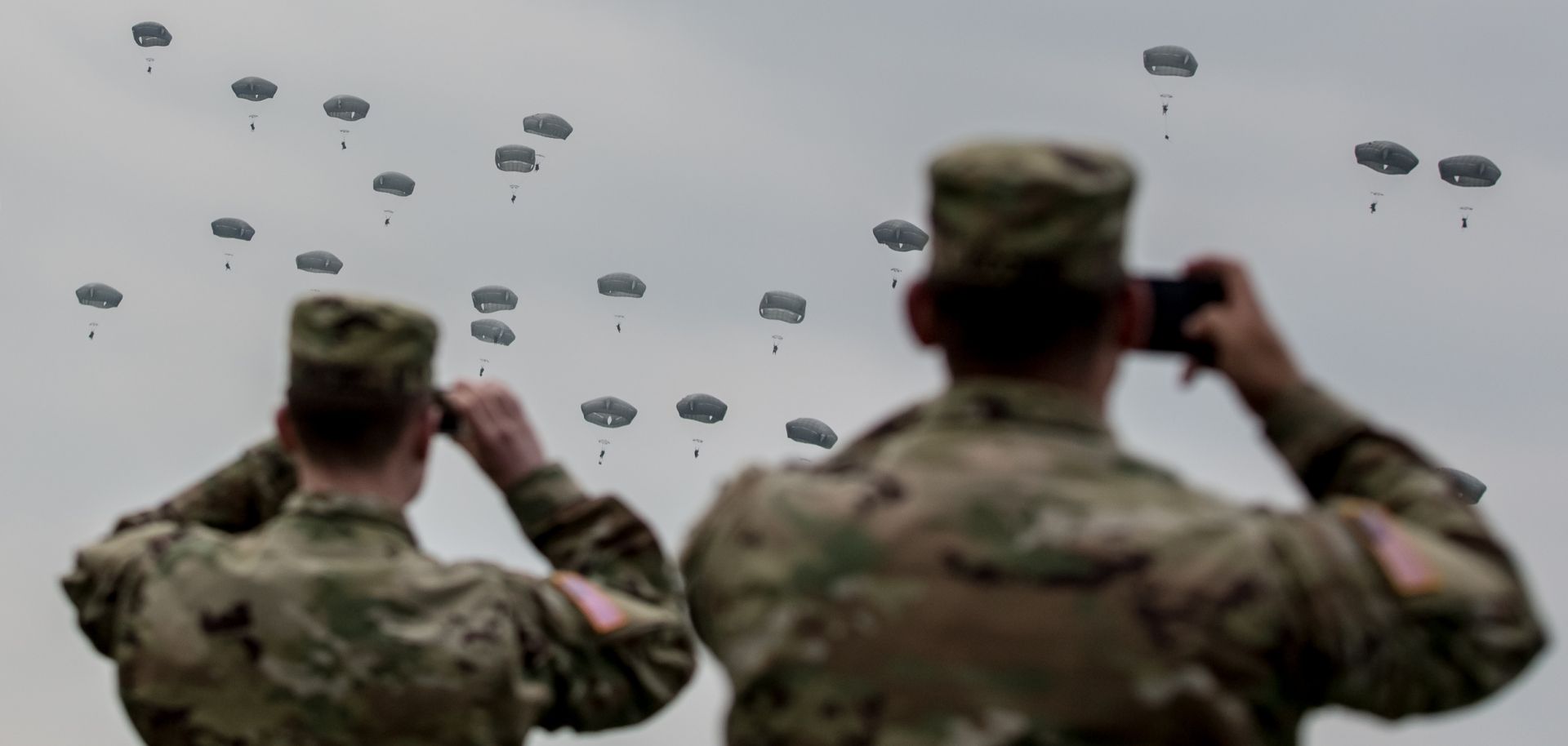COLUMNS
A Distracted U.S. Struggles To Shift Its Global Focus

May 31, 2018 | 08:00 GMT

U.S. soldiers watch paratroopers from the U.S. Army 173rd Airborne Brigade, the UK's 16 Air Assault Brigade and Italian Folgore Airborne Brigade as they parachute to the ground during a training jump as part of the Saber Junction 16 military exercises near the Hohenfels Training Area. April 2016, near Grafenwoehr, Germany. The United States is adjusting its force structure top adapt to emerging global threats.
(MATEJ DIVIZNA/Getty Images)
Highlights
- The United States is restructuring its global military footprint, reallocating its resources and shifting its strategic focus to better compete against China and Russia.
- To achieve this, the United States will be compelled to prioritize its commitments in Europe and the Asia-Pacific region.
- However, enduring U.S. commitments elsewhere and emerging global flashpoints will sidetrack Washington's attention and resources.
Subscribe Now
SubscribeAlready have an account?
